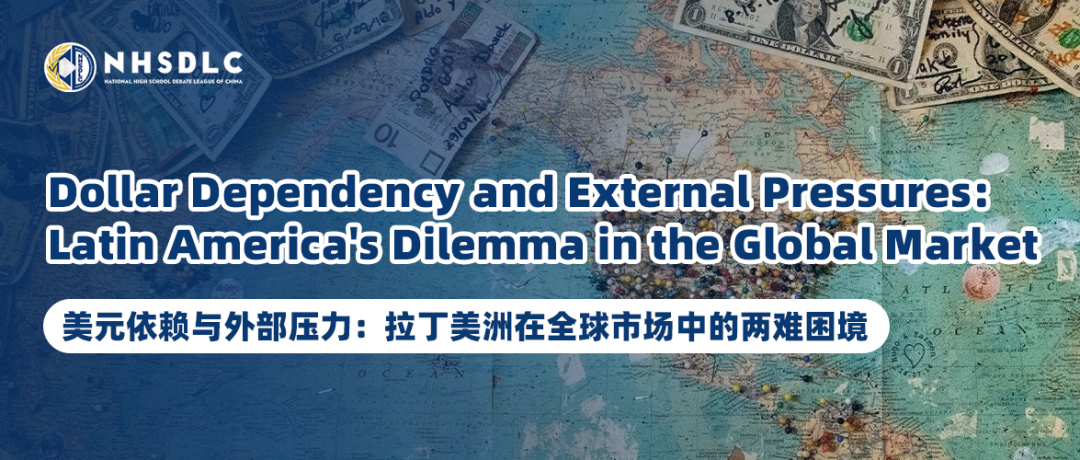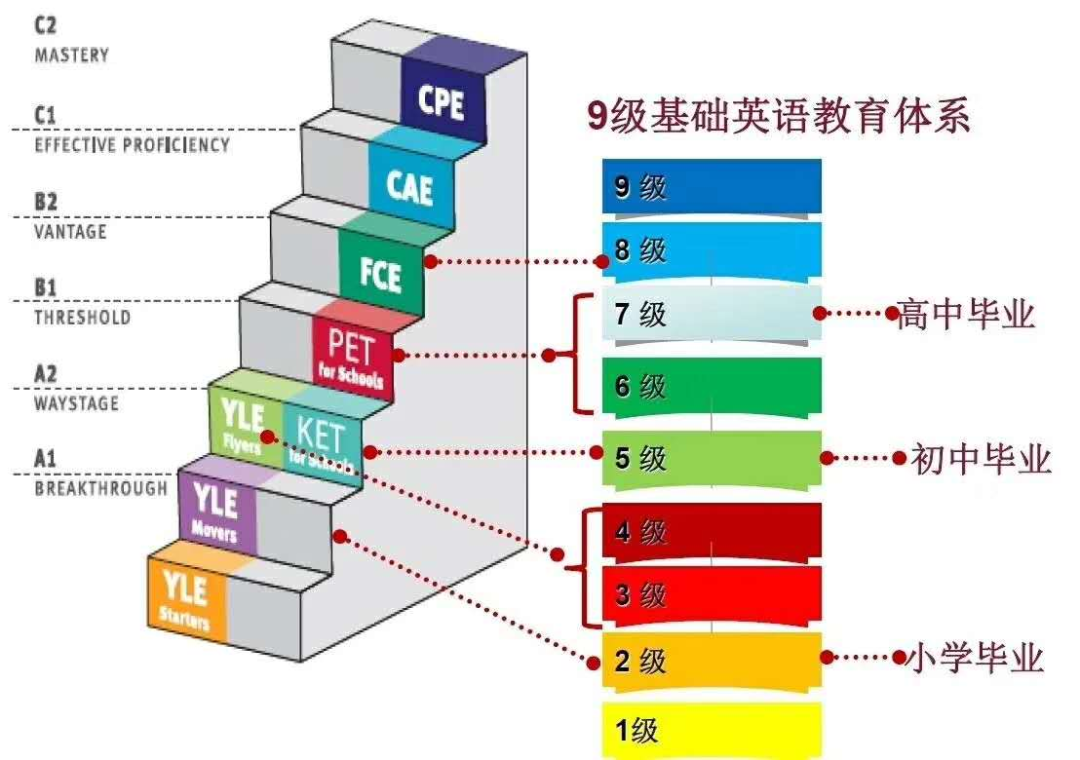秋季赛渐入佳境,大家对于PF辩题的研究也在随之深入,今年秋季PF辩题聚焦经济领域。向各位辩手抛出了一个亟待解决的问题:发展区域内贸易VS开拓国际市场拉丁美洲该何去何从?
不久前我们已更新了
秋季PF辩题锦囊系列第一期
围绕“南方共同市场 (MERCOSUR) ”
为大家浅述了辩题中的重要背景
今天我们就为大家更新
秋季PF辩题锦囊系列第②期
从美元依赖与外部环境切入
分析拉丁美洲在全球市场中的两难困境

拉丁美洲的美元依赖根植于历史与结构性因素。自20世纪下半叶以来,频繁的债务危机与货币超通胀促使多国将美元作为经济"锚点",以稳定本国货币信誉。例如,厄瓜多尔于2000年正式实行美元化,萨尔瓦多紧随其后;阿根廷虽未完全美元化,但长期以美元计价债务和贸易结算,2023年其外贸中美元结算占比仍高达88%。
Latin America's dollar dependency stems from historical and structural vulnerabilities. Since the late 20th century, recurring debt crises and hyperinflation have pushed countries to adopt the U.S. dollar as an economic anchor to stabilize local currencies. Ecuador officially dollarized in 2000, followed by El Salvador; Argentina, while not fully dollarized, relies heavily on dollar-denominated debt and trade settlements, with 88% of its foreign transactions priced in dollars as of 2023.
这种依赖虽在短期内抑制了通胀,却使区域经济深度受制于美联储政策与外生冲击。根据国际货币基金组织数据,拉美国家的外债中美元债务占比平均超过75%,使得美联储的利率政策直接影响各国偿债能力。2023年,美联储连续加息导致拉美国家偿债支出增加约280亿美元,相当于该地区医疗卫生总预算的60%。
According to IMF data, dollar-denominated debt accounts for over 75% of foreign debt in Latin American countries on average, making the Fed's interest rate policies directly impact their debt repayment capacity. In 2023, consecutive Fed rate hikes increased debt servicing costs in the region by approximately $28 billion, equivalent to 60% of the region's total public health budget.
全球市场波动进一步放大了美元化的代价。2022-2023年美联储激进加息周期导致拉美资本外流加剧,据联合国拉美经委会(ECLAC)统计,这两年区域资本净流出占GDP的3.2%,本币对美元平均贬值24%。以巴西为例,雷亚尔波动使进口能源成本飙升,2023年通胀率一度突破6%。
Global market volatility magnifies dollarization costs. The Fed's 2022-2023 rate hike cycle triggered massive capital flight from Latin America; ECLAC data shows net outflows reached 3.2% of regional GDP over the two years, with local currencies depreciating 24% on average. In Brazil, the real's volatility drove import energy costs up, pushing inflation above 6% in 2023.
同时,美元强势削弱了拉美出口竞争力:2023年南共市对亚洲农产品出口因美元定价而利润缩水15%,而智利铜矿出口收入随美元汇率波动频繁,凸显初级产品主导的贸易结构脆弱性。更严重的是,美元升值使拉美国家进口药品和医疗设备成本增加,据泛美卫生组织报告,2023年区域医疗卫生系统因美元走强额外支出120亿美元。
Meanwhile, a strong dollar undermines export competitiveness: MERCOSUR's agricultural exports to Asia saw profits shrink by 15% due to dollar pricing, while Chile's copper revenue fluctuated with exchange rates, exposing the fragility of commodity-led trade. More critically, dollar appreciation increased costs for importing medicines and medical equipment: according to the Pan American Health Organization, Latin American healthcare systems incurred an additional $12 billion in costs due to dollar strength in 2023.

外部压力也通过国际金融机构与地缘政治博弈传导。国际货币基金组织(IMF)对阿根廷、厄瓜多尔等国的贷款附加紧缩条件,限制公共支出与产业补贴,加剧社会矛盾。2023年阿根廷为获得IMF纾困,承诺削减能源补贴,引发大规模抗议。
External pressures also channel through international institutions and geopolitics. IMF loans to Argentina and Ecuador impose austerity conditions, curbing public spending and subsidies while fueling social unrest. In 2023, Argentina pledged to cut energy subsidies for an IMF bailout, triggering protests.
此外,美国对委内瑞拉、尼加拉瓜的金融制裁制造了产生集体恐惧,迫使邻国调整跨境结算方式。如墨西哥2024年推动比索在区域贸易中的使用,但仅覆盖对中美洲贸易的18%,反映去美元化步履维艰。美国财政部2024年的数据显示,由于制裁连带影响,拉美企业跨境支付成本平均上升30%,部分中小型企业被迫退出国际贸易市场。
U.S. financial sanctions on Venezuela and Nicaragua further create spillover effects, pushing neighbors to explore alternative settlements:e.g., Mexico promoted peso use in regional trade in 2024, yet it covered only 18% of Central American transactions, highlighting de-dollarization challenges. According to the U.S. Treasury Department 2024 data, due to sanction spillover effects, cross-border payment costs for Latin American enterprises increased by 30% on average, forcing some SMEs to exit international markets.
区域金融合作机制的发展同样面临结构性障碍。拉美一体化协会(ALADI)2023年推出的本地货币结算系统仅处理了成员国间贸易的6.5%,远低于预期的25%。巴西央行行长内托指出,区域内缺乏统一的清算机制和汇率风险对冲工具是主要瓶颈。
Regional financial cooperation mechanisms face structural obstacles. The local currency settlement system launched by ALADI in 2023 processed only 6.5% of intra-regional trade, far below the 25% target. Brazilian Central Bank President Roberto Campos Neto noted the lack of unified clearing mechanisms and exchange rate hedging tools as major bottlenecks.
与此同时,中国与拉美的人民币结算试点(如巴西对华大豆贸易部分以人民币结算)提供了新路径,但2023年占比不足5%,难以撼动美元主导地位。值得注意的是,2024年巴西与阿根廷达成的本币贸易协议在前三个季度仅执行了承诺规模的30%,显示出去美元化实践中的执行力缺口。
Meanwhile, China-Latin America yuan pilot programs (e.g., Brazilian soy exports settled in yuan) offer alternatives but accounted for under 5% of trade in 2023, far from displacing dollar hegemony. Notably, the local currency trade agreement between Brazil and Argentina achieved only 30% of its committed volume in the first three quarters of 2024, revealing implementation gaps in de-dollarization practices.
美元依赖对拉美收入分配的影响同样值得关注。世界银行2024年研究报告显示,美元升值使拉美地区基尼系数恶化2.3个百分点,因为低收入群体更易受进口商品价格上涨冲击。在哥伦比亚,美元兑比索每升值10%,贫困率就上升0.7%。此外,美元计价的海外汇款虽为多国提供外汇来源,但2023年汇款手续费平均高达8.5%,远高于全球3%的平均水平,这些成本最终由移民劳工承担。据美洲开发银行估算,仅2023年,拉美移民劳工因汇率和手续费损失就达95亿美元。
Dollar dependency's impact on income distribution warrants attention. A 2024 World Bank study shows dollar appreciation worsened Latin America's Gini coefficient by 2.3 percentage points, as low-income groups are more vulnerable to imported inflation. In Colombia, every 10% appreciation of the dollar against the peso increases poverty rates by 0.7%. While dollar-denominated remittances provide foreign exchange, their average transaction cost reached 8.5% in 2023, far exceeding the global 3% average costs ultimately borne by migrant workers. The Inter-American Development Bank estimates that in 2023 alone, Latin American migrant workers lost $9.5 billion due to exchange rates and fees.

根本而言,美元依赖是拉美深度融入全球市场的双刃剑。它赋予宏观稳定性,却以牺牲货币政策主权为代价,并放大外部冲击。世界银行2024年报告指出,拉美若将区域内贸易占比从当前15%提升至30%,可降低美元结算需求约20%,但需配套的产业互补与金融合作。
Ultimately, dollar dependency reflects Latin America's integrated yet vulnerable global ties. It grants stability but sacrifices monetary sovereignty and amplifies external shocks. A 2024 World Bank study notes that raising intraregional trade from 15% to 30% could cut dollar reliance by 20%, yet requires industrial complementarity and financial integration.
在"去风险化"全球浪潮中,拉美需平衡短期稳定与长期自主,否则将持续暴露于中心经济体的政策外溢风险。美洲开发银行行长伊兰·戈德法恩强调,建立区域支付体系和共同储备机制应是优先事项,但需要政治意愿和制度创新来突破现有困局。
As global "de-risking" accelerates, the region must balance short-term stability with long-term autonomy—or remain exposed to core economies' policy spillovers. IDB President Ilan Goldfajn emphasizes that establishing regional payment systems and common reserve mechanisms should be priorities, but requires political will and institutional innovation to break current impasses.













